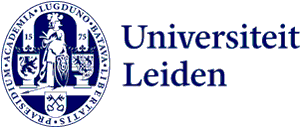
Small actions by our labs add up to big steps in sustainability
Freezers set three degrees higher, a recycling bin for plastic petri dishes or timer switches installed on equipment: a growing number of Leiden University laboratories are taking small – but effective – steps to reduce their environmental impact, via the internationally recognized Laboratory Efficiency Assessment Framework (LEAF) programme. Will your lab join them?
Marlies Nijemeisland is the Sustainability Coordinator in the Strategy and Academic Affairs directorate and the central point of contact for LEAF. Bert Beerkens is a postdoc and member of the Green Initiative committee within the Leiden Academic Centre for Drug Research (LACDR).

Hello Marlies and Bert, why is the university participating in the LEAF programme?
Marlies: ‘In short: to reduce the environmental impact of our labs. Laboratories use much more energy and raw materials than ordinary offices. So if we can reduce these emissions, it will certainly have an effect on our sustainability.’
How does LEAF work in practice?
Marlies: ‘The idea is that lab groups take attainable actions to become more sustainable and then obtain an accreditation for this. They can progress through three levels in total: bronze, silver and gold. Currently, thirteen labs have joined the programme. Since the beginning of 2023 we’ve already presented eight bronze certificates and at the moment two labs are actually very close to silver. What I particularly like about this whole movement is that it’s truly a bottom-up initiative: it works because of the enthusiastic colleagues in the labs who drive initiatives. If these initiatives then lead to structural changes, then that is the icing on the cake.’
‘There’s quite a lot of low-hanging fruit: fairly easy changes that have a big effect.’
Bert: ‘People are realising that it’s possible to be a lot more sustainable. After working on my PhD for four years, I’ve seen with my own eyes the quantities of plastic and solvents that are thrown away in an average research lab. So when I started as a postdoc, I decided to join the committee that’s working with LEAF within the LACDR. With around ten colleagues from different labs, we now exchange ideas regularly about the best way to obtain our certification. It’s great to learn from each other like this.’
Do you have any examples of sustainable actions in our labs?
Bert: ‘There’s quite a lot of low-hanging fruit: fairly easy changes that have a big effect. For example, in our lab we now make sure that all the fume cabinets are closed and switched off after use. And our freezers are now set at minus 70 degrees instead of minus 80, or minus 18 instead of minus 21. Finally, all the hard plastic is recycled and w’e currently running a pilot for soft plastic as well.’
Marlies: ‘Some of the labs have installed timers on equipment that in the past was switched on day and night, or have reduced the brightness settings of their monitors on a structural basis. Another example is replacing plastic dishes and measuring cups with glass materials. Introduction documents about sustainable work practices have also been developed for new lab staff, and a poster is currently being developed for the practical labs where students have classes; because making our education greener is at least as important, of course.’
Bert: ‘On paper, some of the steps perhaps sound simple, but implementing them raises a lot of questions at first. If you store samples in a slightly less cold freezer, will they still be preserved properly? And how can you conduct an experiment using fewer plastic materials? You can see that literature on these subjects is now starting to be published more often, from labs all round the world.’
‘If everyone who works in a lab can make their experimental setup just a bit more sustainable, we can achieve a great deal.’
Marlies: ‘And it helps that we’re working together more within the university. It means that knowledge is shared quickly and the time demands for individual labs are becoming less.’
Is there anything else you’d like to say to colleagues about LEAF?
Bert: ‘I think perhaps the most important thing is that the programme helps us speak with each other more often about sustainability, and you therefore create awareness in people. If everyone who works in a lab now thinks of one small change to make their experimental setup just a bit more sustainable, we can ultimately achieve a great deal.’
Marlies: ‘I completely agree. And in addition to the fact that LEAF helps us reduce the enormous footprint of our research, I think we can really have a big impact on our students and PhD candidates by teaching them sustainable lab skills, as the new generation of researchers. As a university, we all need to take our responsibility in this.’
Want to join the LEAF programme?
Anyone who works in a Leiden University lab can set up a ‘green team’ for participation in the programme. LEAF can be used in ‘dry’ labs, wet labs and teaching labs. It can involve a research group within a lab, an entire lab or a group of labs. The LEAF programme requires lab groups to engage in small, feasible actions that reduce their environmental impact, such as:
- working with less single-use plastic
- reducing energy consumption
- better waste sorting
- saving water
- increasing awareness about sustainability
Visit the LEAF website for more information, a manual and a registration link. Do you have any questions? Feel free to send them to duurzaamheid@leidenuniv.nl. Or watch this video, in which colleagues share their experiences with LEAF.
Text: Evelien Flink
